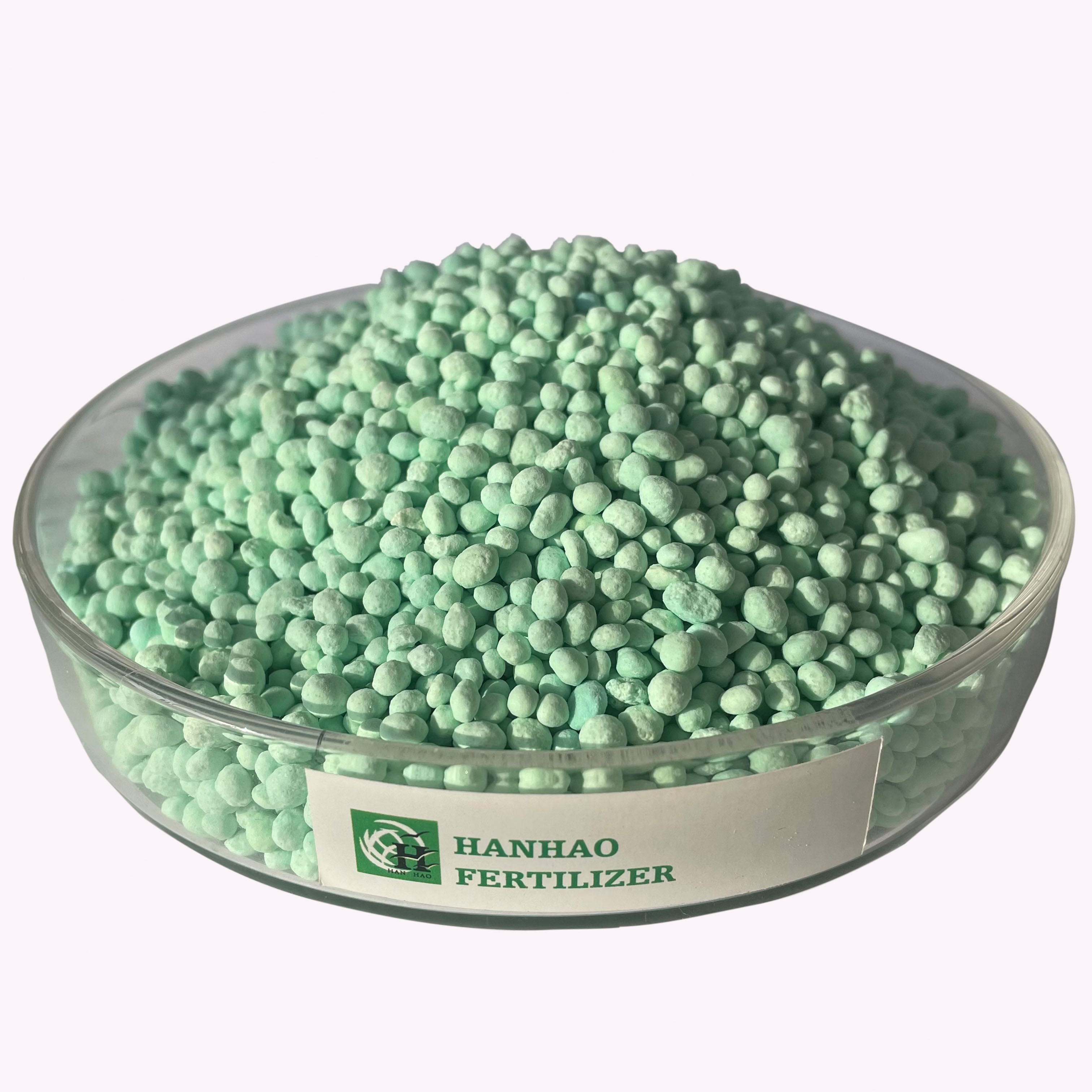
Sep . 29, 2024 06:39 Back to list
Exploring the Benefits of 22-0-3 Fertilizer for Optimal Plant Growth and Nutrition
Understanding 22-0-3 Fertilizer A Comprehensive Overview
Fertilizers play a crucial role in agriculture by providing essential nutrients that are often lacking in the soil. Among the various types of fertilizers available, 22-0-3 fertilizer is noteworthy due to its unique nutrient composition and specific applications. In this article, we will delve into the characteristics, benefits, and appropriate usage of 22-0-3 fertilizer, offering a clear understanding for gardeners and farmers alike.
Nutrient Composition
The numbers in fertilizer labels such as 22-0-3 represent the percentage by weight of three essential nutrients nitrogen (N), phosphorus (P), and potassium (K). For 22-0-3 fertilizer
- 22% Nitrogen This high nitrogen content is beneficial for promoting lush, green foliage and supporting vigorous plant growth. Nitrogen is a vital component of amino acids, proteins, and chlorophyll, making it essential for photosynthesis and overall plant health.
- 0% Phosphorus The absence of phosphorus in this particular formulation means that it is not suited for early root development, flowering, or fruiting stages of plants that require phosphorus for energy transfer and root growth.
- 3% Potassium Although potassium is present in a smaller quantity, it plays a critical role in regulating plant processes such as water uptake, enzyme activation, and photosynthesis. Potassium is essential for overall plant productivity and health.
Benefits of 22-0-3 Fertilizer
1. Promotes Vegetative Growth The high nitrogen content makes 22-0-3 fertilizer particularly effective for leafy vegetables, grasses, and other plants that benefit from enhanced foliar growth. It is often used in applications where maximizing foliage is desired, such as in lawns and vegetable gardens.
2. Fast-Acting Formula Many formulations of 22-0-3 fertilizers are designed to release nutrients quickly, providing plants with immediate access to nitrogen. This rapid action is beneficial during critical growth phases or in scenarios where plants exhibit nitrogen deficiency symptoms.
3. Application Flexibility Due to its unique nutrient profile, 22-0-3 fertilizer can be tailored for specific growth stages. It is often used during the early stages of a plant's life cycle when the focus is on establishing strong stems and leaves.
22 0 3 fertilizer

4. Ideal for Certain Crops Certain crops, especially leafy greens, ornamental plants, and turf grasses, thrive with high nitrogen levels. 22-0-3 is a suitable choice for these plants, making it popular among gardeners and landscapers.
How to Use 22-0-3 Fertilizer
Using 22-0-3 fertilizer effectively requires understanding the specific needs of the plants being cultivated. Here are some guidelines for application
1. Soil Testing Before applying fertilizer, conduct a soil test to determine existing nutrient levels. A test can help identify whether additional nitrogen is necessary or if other nutrients are lacking.
2. Application Timing Apply 22-0-3 fertilizer in early spring for most lawns and leafy crops. This timing supports vigorous growth as plants emerge from dormancy.
3. Method of Application Depending on the formulation, 22-0-3 can be applied in granular form or as a liquid. For granular applications, evenly spread the fertilizer over the soil and lightly incorporate it into the top layer. For liquid fertilizers, follow the manufacturer's instructions for dilution and application rates.
4. Watering After application, water the area well to help the fertilizer dissolve and penetrate the soil, ensuring that plants can access the nutrients.
5. Monitor Plant Health Keep an eye on plants after fertilization. If you notice dark green foliage and rapid growth, the fertilizer is working. However, be cautious of over-fertilization, which can lead to nutrient burn.
Conclusion
22-0-3 fertilizer is a specialized nutrient source particularly beneficial for leafy plants and those requiring high nitrogen levels. Understanding its composition, benefits, and proper application techniques can lead to enhanced growth and soil health. As with any fertilizer, responsible use based on specific plant needs will yield the best results, contributing to a thriving garden or agricultural operation.
-
10 10 10 Fertilizer Organic—Balanced NPK for All Plants
NewsJul.30,2025
-
Premium 10 10 10 Fertilizer Organic for Balanced Plant Growth
NewsJul.29,2025
-
Premium 10 10 10 Fertilizer Organic for Balanced Plant Growth
NewsJul.29,2025
-
Premium 10 10 10 Fertilizer Organic for Balanced Plant Growth
NewsJul.29,2025
-
50 Pound Bags of 13-13-13 Fertilizer for All Plants – Bulk & Organic Options
NewsJul.28,2025
-
High-Efficiency 15-30-15 Granular Fertilizer for Healthy Crops
NewsJul.28,2025
